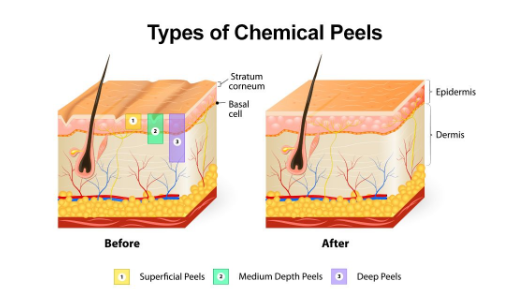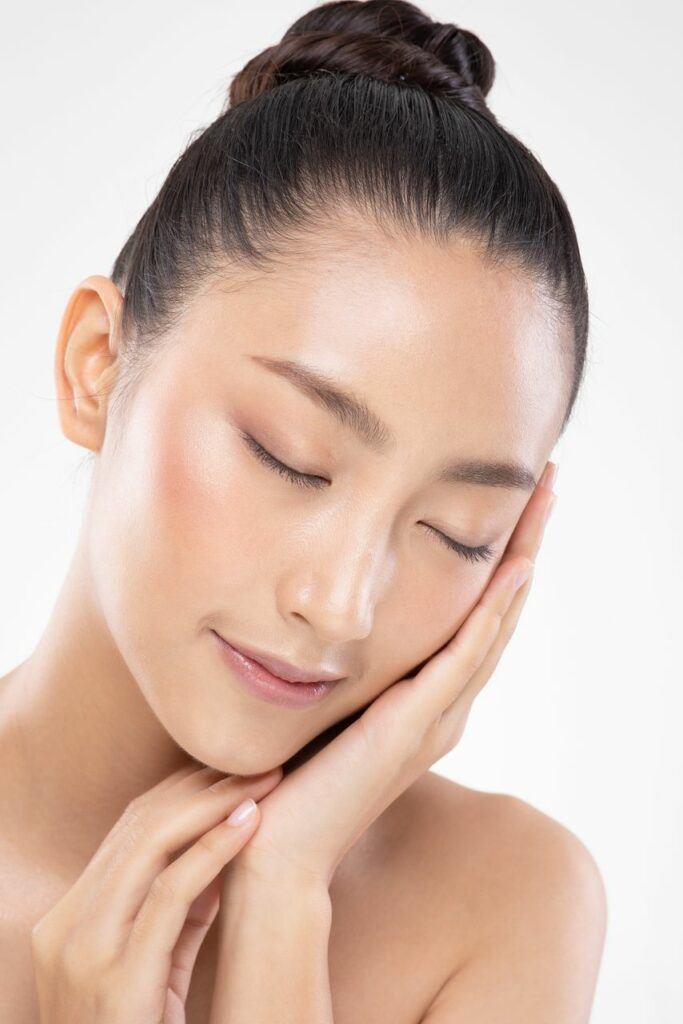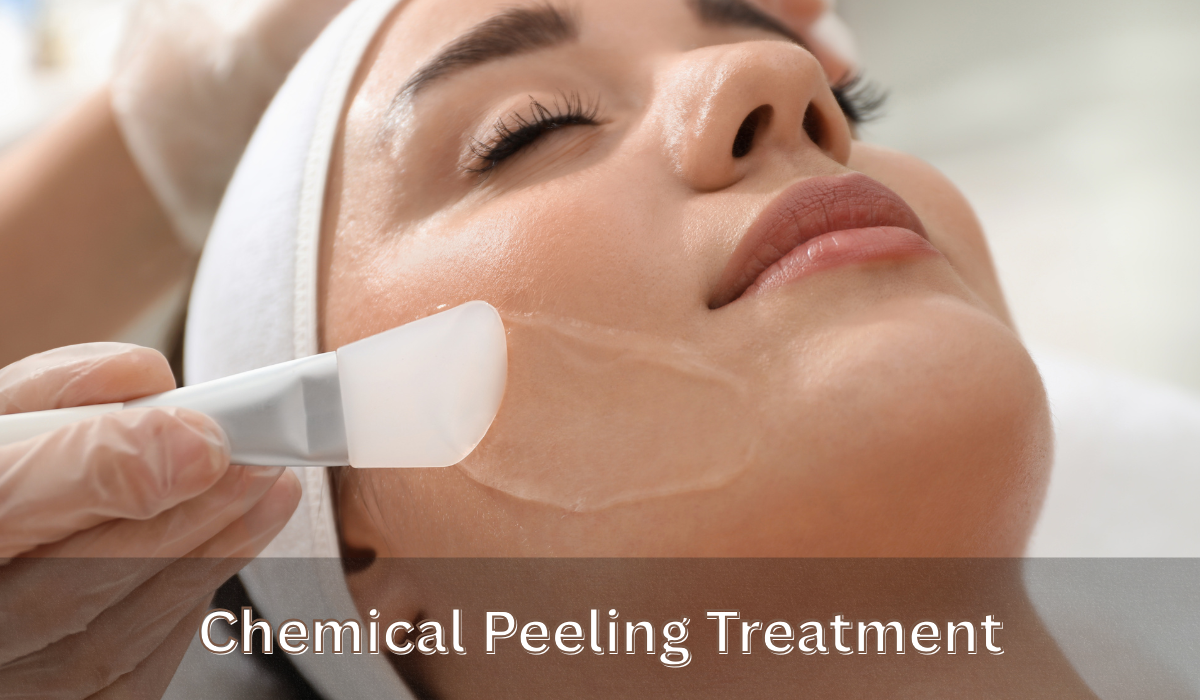Chemical Peeling Treatment: Benefits, Types, and What to Expect
Mandelic acid chemical peels are a popular treatment designed to improve skin texture, reduce signs of aging, and address issues like acne, hyperpigmentation, and sun damage. By applying a chemical solution to the skin, peels exfoliate the outer layers, revealing smoother, brighter, and more youthful skin underneath.
In this comprehensive guide, we’ll explore:
- How mandelic acid chemical peels work
- Different types of peels (light, medium, deep)
- Benefits for various skin concerns
- What to expect during and after treatment
- Potential side effects and aftercare tips
- Who is an ideal candidate
How Do Chemical Peels Work?
Chemical peels work by applying specialized acid or enzyme solutions to exfoliate the skin and boost collagen production. The treatment depth varies based on the formula’s strength: light peels target only the outer epidermis for gentle renewal, medium peels reach the upper dermis to address moderate concerns, while deep peels penetrate the lower dermal layers for significant transformation.
Mandelic chemical peeling is a type of superficial chemical peel, utilizing mandelic acid, derived from bitter almonds, to exfoliate the skin and address various skin concerns.This controlled removal of damaged outer layers accelerates cell turnover, effectively diminishing imperfections like discoloration, fine lines, and texture irregularities. By stimulating fresh skin growth, peels reveal a healthier, more radiant complexion. The process is customizable, allowing dermatologists to tailor the peel’s intensity to each patient’s specific skin needs and goals.
Types of Chemical Peels

1. Light Chemical Peels (Superficial Peels)
Best for: Mild acne, dullness, fine lines, and uneven texture.
Common acids used:
- Glycolic Acid (AHA) – Derived from sugar cane, excellent for brightening.
- Lactic Acid (AHA) – Gentler, hydrating, ideal for sensitive skin.
- Salicylic Acid (BHA) – Oil-soluble, great for acne-prone skin.
Recovery: Minimal downtime (slight redness for a few hours).
Frequency: Every 2-4 weeks for best results.
At Dermique skincare, we apply Mandelic acid chemical peeling which is a type of superficial chemical peel known for their gentle exfoliation and suitability for sensitive skin. They are effective in addressing skin concerns such as acne, uneven skin tone and fine lines by promoting cell turnover and brightening the complexion.
2. Medium Chemical Peels
Best for: Moderate wrinkles, sun damage, and acne scars.
Common acids used:
- Trichloroacetic Acid (TCA 20-35%) – Effective for pigmentation and texture.
- Jessner’s Peel (Combination of salicylic, lactic, and resorcinol).
Recovery: 5-7 days of peeling, redness, and flaking.
Frequency: Every 3-6 months.
3. Deep Chemical Peels
Best for: Severe wrinkles, deep scars, and precancerous growths.
Common acid used:
- Phenol Peel – Strongest option, provides long-lasting results.
Recovery: 2-3 weeks of significant peeling; requires strict aftercare.
Frequency: Typically once in a lifetime due to intensity.
Benefits of Mandelic acid Chemical Peels
Mandelic acid chemical peels offer multiple skin-enhancing benefits by removing damaged outer layers and stimulating renewal. These treatments effectively reduce acne breakouts by unclogging pores and controlling oil production. They diminish hyperpigmentation, sun spots, and melasma by breaking down excess melanin deposits. Fine lines and mild wrinkles appear softened as peels boost collagen production for firmer skin. The exfoliation process also improves texture, smoothing rough patches and minimizing superficial scars. With regular treatments, peels enhance overall radiance by revealing fresher, more even-toned skin beneath. They’re particularly beneficial for addressing dullness, giving the complexion a healthy glow. Customizable for different skin types and concerns, chemical peels provide both immediate and cumulative improvements when performed professionally.
Is Mandelic acid Considered Safe?
Mandelic acid is generally considered safer and gentler compared to other alpha hydroxy acids (AHAs), partly because of its larger molecular size. Here’s why that matters:
Mandelic acid is gentler than other AHAs like glycolic or lactic acid due to its larger molecular size, which slows its penetration into the skin, reducing the risk of irritation, redness, or sensitivity. This makes it ideal for sensitive skin, darker skin tones, and acne-prone individuals. Additionally, mandelic acid offers dual benefits as both an AHA and an antibacterial agent (similar to BHAs), making it effective for treating acne, uneven skin tone, and fine lines while maintaining a mild yet impactful approach. Its balanced properties ensure smoother, clearer skin with minimal risk of adverse reactions.
Chemical Peeling Treatment Price In Malaysia
In Malaysia, the price of a chemical peel treatment depends on the peel type, clinic reputation, and location. Superficial peels (e.g., glycolic or salicylic acid) typically cost RM 150 to RM 400 per session. Medium-depth peels (e.g., TCA) range from RM 500 to RM 1,200, while deep peels (e.g., phenol) can exceed RM 2,000. Additional factors like dermatologist expertise and post-treatment care can affect costs. Multiple sessions are often recommended for best results. Always consult a certified dermatologist or aesthetic clinic for personalized pricing and treatment plans.
What to Expect During & After Treatment
During a chemical peel treatment, your skin will be thoroughly cleansed before the solution is applied, which may cause a mild tingling or burning sensation depending on the peel’s strength. The procedure typically takes 15-30 minutes for light peels, while deeper peels may require sedation and take longer. Immediately after, you’ll experience redness and tightness similar to sunburn. Light peels involve minimal downtime with slight flaking for 2-3 days, while medium peels result in noticeable peeling for 5-7 days. Deep peels require 1-2 weeks of recovery with significant peeling and crusting. Post-treatment, your skin will be more sensitive to sunlight, making daily SPF 30+ protection essential. Most patients see initial results within a week, with full effects appearing as the skin fully heals over several weeks. Follow your provider’s aftercare instructions carefully to ensure proper healing and optimal results.
Who Is the Best Candidate for a Chemical Peel?
Chemical peels are ideal for Malaysians looking to refresh their complexion and address common skin concerns. The best candidates are those struggling with acne, uneven pigmentation, sun damage, or early signs of aging who want brighter, smoother skin. These treatments work particularly well for individuals with oily or combination skin types, as well as those with dull complexions needing revitalization. However, those with very sensitive skin, active breakouts, or certain medical conditions should consult our skin specialists first. At our clinic, we customize each peel to your unique skin needs, ensuring safe, effective results for all skin tones common in Malaysia’s tropical climate.
Chemical Peels vs. Other Skin Treatments
| Treatment | Best For | Downtime |
| Chemical Peel | Pigmentation, texture, mild wrinkles | 1 day – 2 weeks |
| Microdermabrasion | Surface exfoliation | None |
| Laser Resurfacing | Deep wrinkles, scars | 1-3 weeks |
| Microneedling | Collagen induction | 2-3 days |
Final Thought
Chemical peels are a versatile and effective treatment for rejuvenating the skin, whether you’re targeting acne, aging, or discoloration. Choosing the right peel depends on your skin concerns and desired downtime. Interested in trying a chemical peel? Book a consultation with a licensed skincare professional to determine the best option for your skin!



